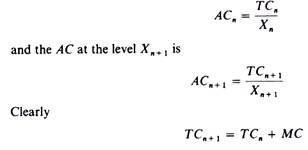

So at, if you get another truck, you could have another short-runĪverage total cost curve that looks something like But once you get that third truck, now you can optimally Of months for it to show up and be outfitted and whatever. Order another truck, and maybe it takes a couple But you're in the world where people want toīuy 300 tacos per day, and 300 tacos with two With those two trucks that are optimal for 200 units We actually do have 200 sold, 200 units being produced a day or 300 units produced per day. Short-run average total cost, and this is for one truck, this would be suboptimal if Is based on one truck, so let me call this our Market were to actually go back to what we expected or even beyond, then our cost would go even higher. So if things were to getĮven worse than that, our cost would go up. And the curve might look something like, something like this. So at 100, at 100 tacos per day, our costs are 60 cents per taco. And so in the long run, youĬan adjust your fixed cost, so with one truck, with aĬurve that looks like this. Let's sell one of those trucks to lower our average total cost. We're only at 50% utilizationĪt 100 tacos per day. Rational thing would be, hey, let's sell one of those trucks. Scenario actually happens, that there's only demandįor 100 tacos per day. Situations, let's say that we have the more pessimistic It looks like it would be about, let's just call that 80 cents, 80 cents per taco as our short-runĪverage total cost. What the short run is, well, then we might beĪt, say, this point. Well, if we can't change our fixed cost, which is, by definition, Let's say that this right over here is, let's say this is 70 cents, 70 cents per taco. Of trucks we have constant, so we don't change our fixed cost, well, then our cost per People are demanding? So let's say this is 100 right over here. To produce 100 tacos per day because that's how many Now, what if instead of 200 tacos per day, it ends up that we only have This is our short-run average total cost, and this is a situation where we have two of our food trucks per day, two food trucks. But now because we're differentiating between our short run and long run, let's make this very clear. We've seen curves like this in the past, and we would have call this It might look, might look something like this. And so your average total cost curve might look something like this. Tacos that you might have to produce in a givenĭay, might vary from that, and that will actually help construct your average total cost curve. But the actual number of sales, the actual number of There, 200 tacos per day, we get to a cost per taco, average total cost per taco. So if we're at 200 tacos per day, let me put it right over Per taco, 200 tacos per day, that happens with two food trucks. Optimizing for 200 tacos today, you want to minimize your cost And then in the vertical axis, this is going to be cost per taco, cost per taco. Quantity of tacos per day, quantity of tacos. And so you might have anĪverage total cost curve that looks like this. Is essentially going to be, let's say it's just your food truck, and then you're going Is optimize your fixed cost to minimize your average total cost for 200 tacos per day. Now, in this world, what you would want to do So we're going to target, target 200 tacos, tacos per day.

And we do some market research,Īnd we feel pretty confident that we are going to be able And we haven't started our business yet, but we have to decide how And so each food truck can optimally, optimally, I'll just write it like that, serve 100 tacos per day. Say we're going to sell tacos, so these are taco food trucks. And let's say that each food truck, so each food truck, and let's So let's imagine that we are trying to open up a food truck business. So what we're gonna do in this video is think about how the average total cost that we've studied in previous videos, which were actually short-runĪverage total costs, how those relate to the So in the long run,Įverything is variable. But in the long run, you can always add moreįactories or shut down factories. The short run would be how long it takes to build another factory or how long it takes to closeĭown or sell another factory. But if we talk about longer term, so let's say you're running a factory, and, in the short run, Remember, the short run isĭefined as the amount of time over which at least one But when we're talking aboutįixed costs, by definition, that means we're talkingĪbout things in the short run. Your average variable cost and your average fixed cost. Several videos so far, where it was the sum of We've talked about the idea of average total cost in


 0 kommentar(er)
0 kommentar(er)
